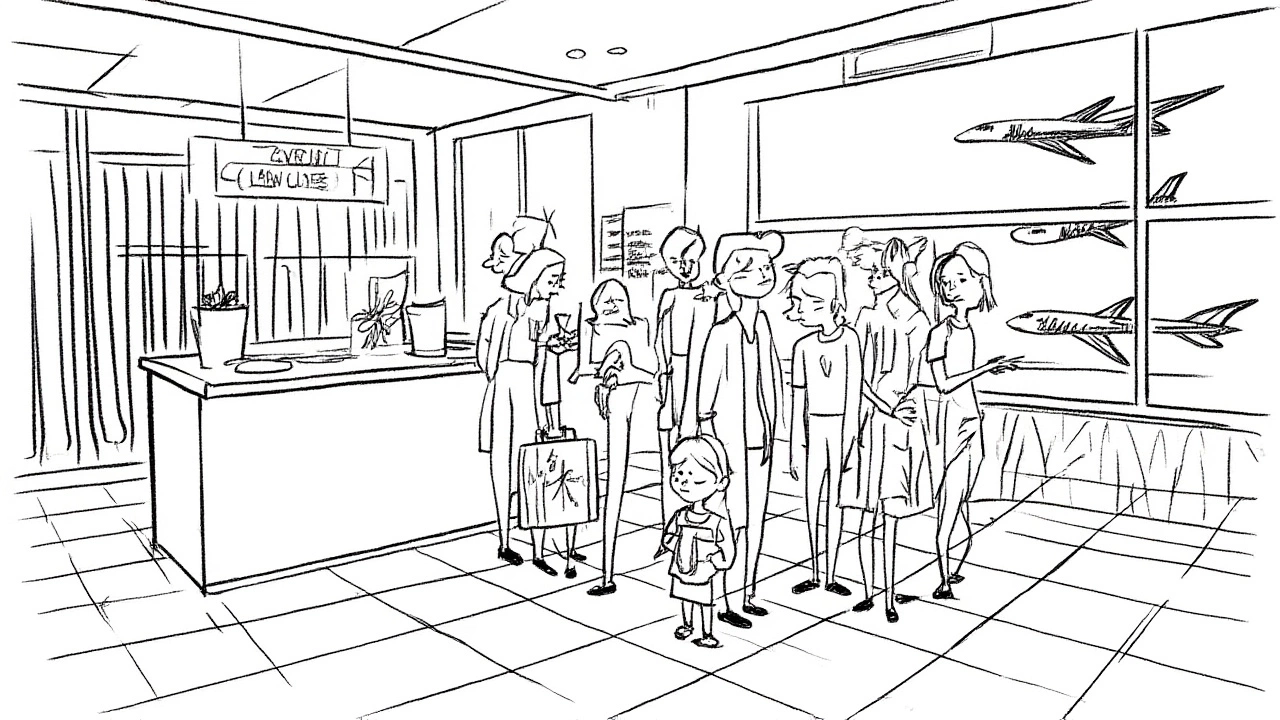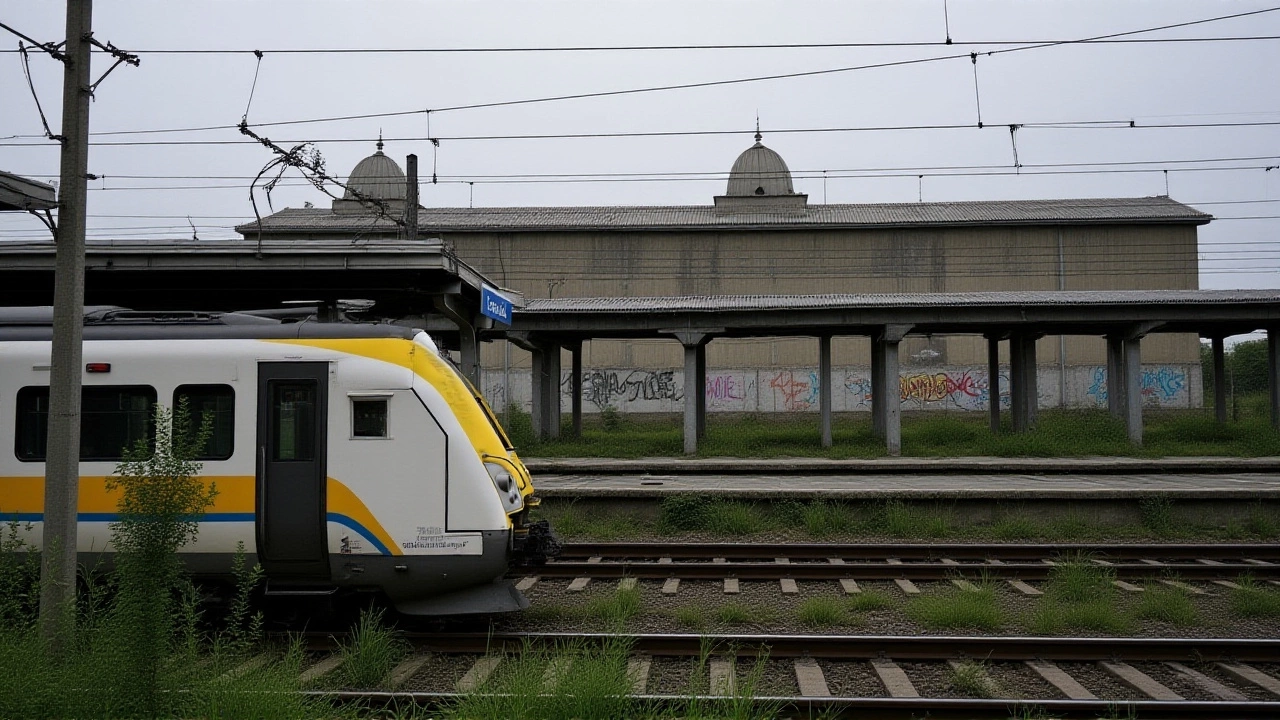On Wednesday, November 26, 2025, Belgium came to a standstill as a nationwide strike triggered by outrage over the federal government’s 2026 austerity budget brought air travel to a halt and crippled public transit. At Brussels Airport (EBBR), all commercial passenger departures requiring security screening were canceled. At Brussels South Charleroi Airport (EBCI), every single flight — arrivals and departures — was scrapped. The strike, organized by three major unions, wasn’t just about wages. It was a direct challenge to Alexander De Croo’s government and its plan to slash public spending, raise retirement ages, and freeze hiring — measures unions say will gut public services and punish workers.
What triggered the strike?
The roots go back to the government’s draft 2026 budget, unveiled in October, which proposed €2.3 billion in cuts to public sector budgets and changes to pension eligibility. Unions called it a betrayal. General Labour Federation of Belgium (ABVV/FGTB), Christian Trade Union (ACV/CSC), and General Confederation of Liberal Trade Unions of Belgium (ACLVB/CGSLB) didn’t just march. They planned a precision strike on infrastructure — the kind that hits the public where it hurts most: mobility.
It wasn’t their first move. On June 25, 2025, similar walkouts disrupted both airports and trains, but air traffic controllers stayed on the job. This time? Everything changed. The unions made it clear: no concessions, no flights. And the government? They didn’t blink.
How bad was the disruption?
At Brussels South Charleroi Airport (EBCI), the NOTAM A4385/25 left no room for interpretation: “100 PERCENT REDUCTION FOR ARRIVING AND DEPARTING FLIGHTS IS REQUIRED.” No exceptions. No loopholes. Ryanair, TUI fly Belgium, and Wizz Air — all grounded. Over 80 flights vanished from the schedule. Travelers who’d booked holidays or business trips were left stranded.
At Brussels Airport (EBBR), the situation was slightly less total — but still devastating. NOTAM A4394/25 banned all commercial departures requiring passenger screening. That meant nearly every scheduled flight leaving for Europe, North Africa, or the Middle East was canceled. The twist? Business aviation — private jets, corporate flights — kept flying. ExecuJet Aviation Group confirmed operations continued with only minor delays. It wasn’t lost on travelers: while CEOs boarded private jets, families were stuck in terminal lounges.
Public transport didn’t escape. National Railway Company of Belgium (NMBS/SNCB) ran less than 30% of its trains. In Brussels, STIB/MIVB suspended trams and buses on key routes. De Lijn in Flanders cut service by half. Commuters walked. Buses sat idle. Hospitals rescheduled non-emergency transports.
Who’s affected — and who’s not?
It’s easy to say “everyone” was impacted. But the reality is more layered. Tourists arriving from the UK or Germany were stranded. Belgian families heading to Christmas markets in Germany or the Netherlands were left with no options. Students studying abroad couldn’t return. Even medical patients needing urgent care abroad faced delays.
Meanwhile, cargo flights kept rolling at both airports. FedEx, DHL, and UPS operations continued — a deliberate choice by unions to avoid blocking essential goods. Business aviation, too, remained open. That’s not an accident. It’s a message: this isn’t about shutting down the economy. It’s about targeting the system that protects the powerful while squeezing the rest.
What’s the government’s response?
Prime Minister Alexander De Croo called the strike “regrettable but predictable.” His cabinet stood firm, insisting the budget cuts were necessary to stabilize Belgium’s debt, which hit 98% of GDP in 2024. “We cannot borrow our way out of this,” De Croo said in a press briefing on November 25. “But we also won’t sacrifice the future of our children to appease short-term demands.”
Unions fired back. “This isn’t about pensions,” said Marie Lefèvre, a spokesperson for ACV/CSC. “It’s about dignity. If we’re told to work longer for less, then why should we pay taxes to support a system that rewards the wealthy and punishes the working class?”
Experts note this is the most coordinated labor action since the 2013 pension reform strikes. But this time, the unions have learned. They didn’t just shut down trains. They targeted the choke points — the airports that connect Belgium to the world.

What happens next?
Operations are expected to resume on Wednesday, November 27, 2025. But don’t expect a quick return to normal. Airlines are already bracing for a backlog. Brussels Airlines, part of the Lufthansa Group, warned of delays lasting into the weekend. Some flights may be canceled outright due to crew rest requirements and aircraft positioning.
The budget debate continues in Parliament. The 2026 budget must be approved by December 15. If no compromise is reached, unions have hinted at further actions — possibly targeting schools, hospitals, or even border controls. “We’ve shown we can stop the planes,” said Lefèvre. “Now we’ll show we can stop the silence.”
Why this matters beyond Belgium
Belgium is the de facto capital of the European Union. Its airports handle over 25 million passengers annually. Disruptions here ripple across Schengen. Frankfurt, Paris, and Amsterdam airports already reported increased inbound traffic as travelers rerouted. Airlines like Lufthansa and Air France are scrambling to rebook passengers.
More importantly, this strike is a bellwether. Across Europe, governments are pushing similar austerity measures — in France, Italy, Spain. Belgium’s unions are testing a new playbook: use infrastructure as leverage. If it works here, expect copycats.
Frequently Asked Questions
How many flights were canceled during the strike?
At Brussels South Charleroi Airport (EBCI), all 100% of scheduled commercial flights — approximately 120 departures and 115 arrivals — were canceled on November 26, 2025. At Brussels Airport (EBBR), around 180 commercial departures requiring passenger screening were grounded, with an additional 60 arrivals canceled. Cargo and business aviation were unaffected, totaling roughly 300 commercial flights canceled across both airports in a single day.
Why were business jets allowed to fly while commercial flights were grounded?
The unions deliberately excluded business aviation from the strike’s scope. Unlike commercial flights, which rely on airport staff for passenger screening, check-in, and boarding — all of whom walked out — private jets use separate terminals with minimal staffing. ExecuJet and other handlers confirmed security and ground services for BizAv remained operational. This wasn’t an oversight; it was strategy. It signaled that the strike targeted public-sector austerity, not private mobility.
What’s the connection between the June 2025 strike and this one?
The June 25, 2025, strike was a test run. It disrupted trains and airport ground services but didn’t involve air traffic controllers. The November strike was a full escalation: unions coordinated with all transport sectors, including security and baggage handling. The fact that both airports issued identical NOTAM language shows centralized planning. It also proved that even without controlling ATC, they could cripple commercial aviation — a revelation that shocked the government.
How will this affect my upcoming travel to Belgium?
If you’re flying into Brussels Airport or Charleroi between November 27 and December 5, expect delays. Airlines are still repositioning aircraft and reassigning crews. Some flights may be merged or canceled with short notice. Check your airline’s app daily. The backlog from this strike could stretch into the holiday rush, especially with Christmas travel looming.
Is this strike likely to lead to changes in the 2026 budget?
So far, the government hasn’t budged. But the scale of disruption has forced negotiations. Talks between unions and the Ministry of Finance are scheduled for December 2. If no compromise is reached, unions have signaled a second wave of strikes in early January — this time targeting public hospitals and schools. The political pressure is mounting, and with elections due in 2027, even De Croo’s coalition partners are whispering about concessions.
What makes this strike different from others in Europe?
Most European strikes target one sector — trains or teachers. This one was synchronized across air, rail, and urban transit, with a clear political target: the 2026 budget. It also avoided violence, stayed within legal limits, and used precise technical tools (NOTAMs) to maximize impact. That’s not just protest — it’s precision engineering of civil disobedience. Other unions in the EU are watching closely. This could be the new model.


